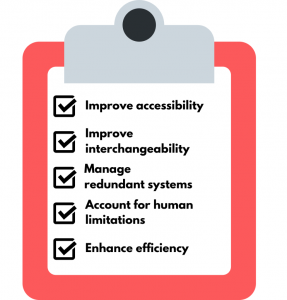What are strategies to reduce corrective maintenance time?
Equipment failures are a major setback for plant operations and overall productivity. During breakdowns, the restoration of plant operations lies in the hands of the maintenance team. Promoting a reliability culture within the team helps ensure that metrics such as corrective maintenance time or mean time to repair (MTR) are continuously tracked and improved.

Here are some strategies to reduce corrective maintenance time and allow your plant to operate at the highest efficiency it can:
1. Improve accessibility
Accessibility is defined as the ease with which equipment components can be reached. Most maintenance workers know that reaching broken parts of an equipment can take significant durations of time. Strategies to improve accessibility are best executed during the design process of setting up a facility. Alternatively, modifications to the arrangement of assets can be done after identifying an opportunity to improve accessibility.
2. Improve interchangeability
When replacing equipment parts, it helps to know what components can be physically or functionally interchanged without compromising the integrity of the asset. Interchangeable parts are particularly common with hardware items such as nozzles, hoses, fastening devices, common valves, etc. Improving interchangeability can reduce the corrective maintenance time by increasing the ease of removing and replacing similar components.
3. Manage redundant systems
Managing redundant systems takes a different approach to improving corrective maintenance time. With this strategy, the actual amount of work to restore a broken equipment might not be reduced significantly. Instead, redundant systems can be substituted for the failed one, thereby reducing the downtime experienced by the plant. The impact of breakdown time on the production can be reduced with this strategy, while also allowing the team to focus more closely on maintenance tasks at hand.
4. Account for human limitations
Corrective maintenance is largely performed by workers, so it is necessary to account for human limitations when designing how assets and equipment are arranged. A big part of this strategy is to consider the ergonomics of the workplace. A practical example of this strategy is the placement of gauges and indicators – the height and readability of such indicators should consider the range of heights and postures of workers that would be reading the data.
5. Enhance efficiency in fault recognition, location, and isolation
Arguably the most challenging strategy in reducing corrective maintenance time is to enhance the skills of the workers. The goal here is to improve their ability to recognize, locate, and isolate faults. This strategy can naturally come as the workforce collectively gains experience. However, proactive measures can also be taken to train workers and equip them with the technical ability to perform maintenance activities well.
Want to keep reading?
Mean Time To Repair (MTR) | What Is MTR?
What is Corrective Maintenance? Definition & Examples
What are ways to improve my equipment uptime?
4,000+ COMPANIES RELY ON ASSET OPERATIONS MANAGEMENT
Leading the Way to a Better Future for Maintenance and Reliability
Your asset and equipment data doesn't belong in a silo. UpKeep makes it simple to see where everything stands, all in one place. That means less guesswork and more time to focus on what matters.

![[Review Badge] Gartner Peer Insights (Dark)](https://www.datocms-assets.com/38028/1673900494-gartner-logo-dark.png?auto=compress&fm=webp&w=336)
